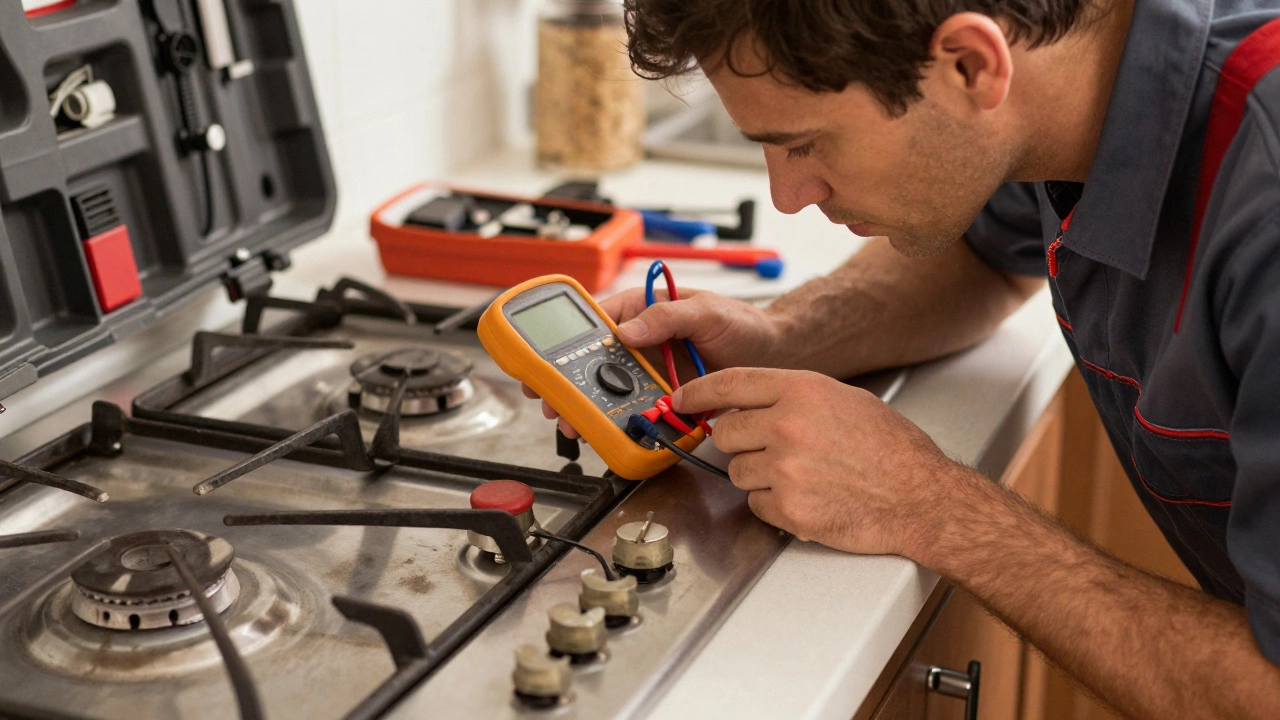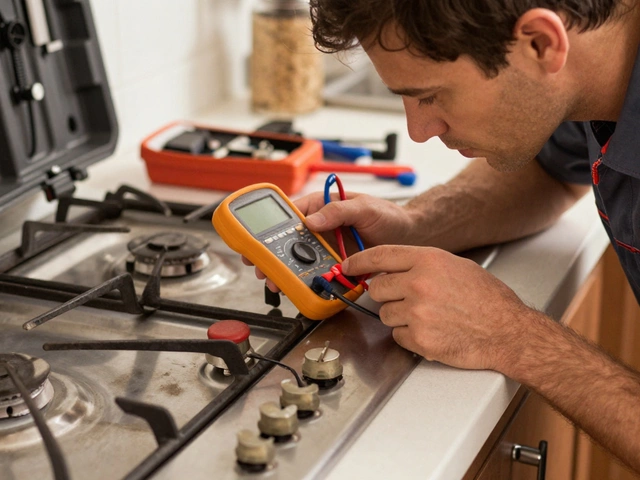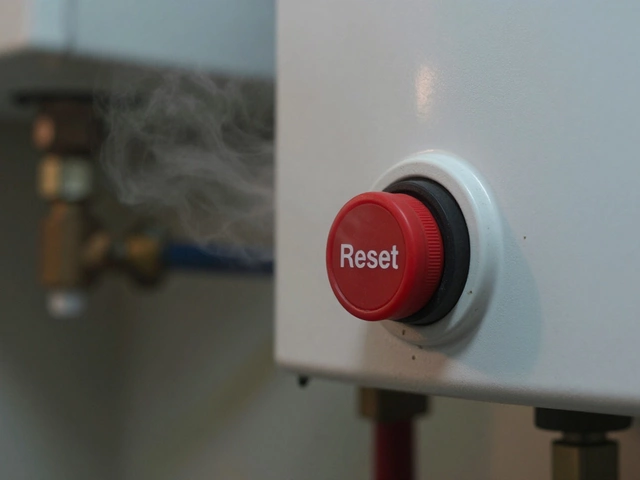If you're reading this, you're probably at a crossroads with your gas hob acting up. No fun, right? A gas hob is a trusty sidekick in kitchens—until it misbehaves. Is it fixable? Let's dive in and find out.
We've all had one of those moments in the kitchen where we're trying to whip up a quick meal, only for the hob to refuse to ignite or hold a flame. Before you panic, not all issues spell the end for your appliance. Many common problems, like weak flames or temperamental burners, have straightforward solutions.
Start with some basic troubleshooting. Does it need a deep clean? Sometimes, food or grease build-up can cause issues you wouldn't expect. Another quick fix could be to check if it's hooked up properly to the gas supply. Sounds simple, but it could save you a call-out fee.
- Common Problems with Gas Hobs
- Basic Troubleshooting Steps
- DIY Repairs You Can Do
- When to Call a Professional
- Preventive Maintenance Tips
- Cost and Considerations for Repairs
Common Problems with Gas Hobs
Ah, the gas hob. It’s a staple in many kitchens, but like everything else, it can run into hiccups. Let's check out some usual suspects when it comes to gas hob repair needs.
1. Ignition Problems
One of the most frustrating things is when the burner refuses to ignite. More often than not, it's caused by food debris or grease that's accumulated over time. Make sure to clean the igniters regularly.
2. Weak or Uneven Flames
If your flames look like they’ve been hit with a shrink ray or they’re all over the place, the culprit could be blocked or dirty burner ports. It's worth checking to ensure they're free of any build-up.
3. Strange Smells
If your kitchen suddenly smells like a gas station, that's a problem. There might be a leak, and this needs immediate attention. Don't try and fix this on your own – safety first!
4. Clicking Sound
Constant clicking when the hob’s not lighting can be annoying. This could mean wet igniters, especially if you've just cleaned or cooked something steamy. Give it time to dry out.
5. Gas Not Reaching the Burner
It’s not uncommon for gas flow issues to pop up. Sometimes, it’s a kink in the gas line or the valves need checking. Before you call a professional, ensure all controls are in the right position.
One study suggests about 80% of gas hob issues can be traced back to improper maintenance or cleaning. A regular cleaning routine can prevent most of these headaches. But should you face these issues often, it might be time to get a pro involved and check if it’s worth the hob maintenance or considering an upgrade.
Basic Troubleshooting Steps
Before you think about replacing your gas hob, take a deep breath and run through some basic troubleshooting. Most issues aren't as complicated as they seem. Let's get to the heart of it.
Check the Gas Supply
First things first—make sure the gas supply is on. Sounds simple, but a lot of folks overlook it. Is the valve open? If you've recently moved the hob or had any installation changes, double-check the connections. A loose connection could be why your appliance isn't acting right.
Inspect the Burners
Burners not lighting or giving you grief? Remove and clean them. Gently take them off and soak in warm soapy water. Scrub away any food bits blocking the holes. Once done, ensure they're dry before placing them back. Clean burners lead to even flames—crucial for proper cooking.
Look at the Igniter
Got a spark but no flame? The igniter might be dirty or defective. Use a toothbrush or a cotton swab to clean debris around the igniter tip. If it still doesn't work, replacement parts may be needed. Remember, if you're uncomfortable tinkering, leave it to the pros.
Examine the Flame
A well-functioning hob should produce a clear, blue flame. If it's yellow or orange, the burner might not be getting enough air, or there could be a blockage. Adjust the air shutter on the burner, if available, to get things back in working order.
- Turn off the gas first.
- Remove burner cap and base.
- Clean with warm, soapy water.
- Reinstall securely.
- Test the flame.
Basic troubleshooting saves time and money. You've already tackled half of it by doing these checks yourself.
DIY Repairs You Can Do
Alright, so your trusty gas hob is on the fritz, and you're considering rolling up your sleeves. There are a few repairs even the least handy person can tackle with a bit of confidence and caution. Let's take a look at what you can do before ringing up the professionals.
Cleaning the Burners
It might sound obvious, but cleaning those burners could be the trick. They get clogged with food or grime. Simply remove them and soak in warm, soapy water. Use a brush to get into those nooks and crannies. A quick tip: use a needle to clear out small holes if they're blocked. Just be gentle!
Fixing Weak Flames
If you notice the flame on your hob is weak, it could be an issue with your gas supply. First, check that the gas valve is fully open. If it's open and you're still seeing weak flames, examine the regulator. It may need adjustment or replacement. Gas hob repair focusing on flame issues can often be resolved by ensuring everything's hooked up correctly.
Adjusting Igniters
Is your hob clicking continuously? The ignition switch might be stuck. To fix this, take a soft brush and give it a good clean. Ensure it's thoroughly dry before testing again. If that doesn't work, gently reposition the igniter to make sure it's aligned with the burner.
Tightening Loose Knobs
Loose knobs might not seem like a big issue, but they can make adjusting heat a hassle. Check if the knob has a screw behind it. If it does, grab a screwdriver and tighten it up. No screws in sight? You might need to replace the knobs entirely.
Remember, dealing with gas can be dangerous. Always ensure your hob is off and disconnected from the gas supply before doing any fixing. If things seem beyond your comfort zone, calling a professional is the safe way to go.

When to Call a Professional
While tackling some gas hob repair issues on your own can save time and money, there are certain situations where it's best to leave it to the experts. Ignoring these signs may not only worsen the problem but could also pose safety risks.
Repeated Ignition Failure
If your hob isn’t igniting despite cleaning and checking connections, it might be a faulty ignition switch or an issue with the gas line itself. These are complex issues best handled by a professional to ensure safety and proper repair.
Strange Smells or Sounds
Noticing a persistent gas smell or unusual noises? This could indicate a gas leak or damage to internal components. Never try to fix these yourself, as they might pose serious risks. Turn off the gas supply and contact a professional immediately.
Burner Won't Stay Lit
A flame that extinguishes quickly often points to an air-to-gas ratio issue or a problem with the thermocouple. Correcting these requires specific tools and expertise. Don't hesitate to get an expert involved if this is happening frequently.
Electrical Issues
For hobs with integrated electrical components or controls, any electrical faults should be addressed by a qualified technician. Electricity and gas make a dangerous combo if handled poorly. Better safe than sorry!
| Issue | DIY or Pro? |
|---|---|
| Minor burner issue | DIY |
| Gas smell | Professional |
| Electrical faults | Professional |
Your safety is top priority. If you're unsure about handling something, or the problem persists even after tackling possible fixes, trust your gut and get professional help. Gambling with gas isn't worth the risk.
Preventive Maintenance Tips
Regular maintenance can keep your gas hob in tip-top shape and save you from unexpected breakdowns. So, what’s considered good upkeep? Let’s dive into some easy suggestions you can start today.
Keep It Clean
First up, cleanliness is key. After cooking, make it a habit to wipe down all surfaces. Use a gentle cleaner—something not too harsh on the surfaces. Clean any spills or food debris immediately to prevent build-up. Attention to detail can save you lots of pain down the road.
Regular Check on Burners
Give your burners a good look at least once a month. Are they clog-free? No amount of cleaning will suffice if the gas supply is blocked. Take them apart if needed and clean each part carefully. This will ensure that they're not only clean but also working efficiently.
Prompt Repairs
If you notice any issues like an uneven flame or strange noises, resolve them promptly. Small problems can quickly escalate if left unaddressed. Look into hob repair early to prevent deterioration into bigger, more expensive problems.
Inspect Connections
It’s important to inspect the gas connections regularly. Any leakage is a serious safety hazard. To do this, apply soapy water along the connections and watch for bubbles that indicate leaks. If you notice any, turn off the gas immediately and call a professional.
Annual Professional Check
Lastly, even with a solid DIY routine, let a professional give your hob a look once a year. They'll ensure everything is working perfectly and will catch any problems you might've missed.
| Maintenance Task | Frequency |
|---|---|
| Surface Cleaning | After each use |
| Burner Check | Monthly |
| Professional Inspection | Annually |
By investing a little time in maintenance, you'll extend the life of your gas hob significantly and keep it performing at its best!
Cost and Considerations for Repairs
Wondering what the financial damage might be when your gas hob repair is due? Knowing the potential costs and considerations can save you from an unexpected bill.
Understanding Repair Costs
The cost of fixing your hob can vary widely depending on what's wrong. Simple issues like cleaning a burner or unclogging an ignition port might just cost you some elbow grease and a few bucks for cleaning supplies.
However, if it's something more substantial—like replacing a burner or fixing a gas leak—expect to pay anywhere from $100 to $300 in New Zealand on average. This can shoot up if specialized parts or extensive labor are involved.
What's Included?
When you hire a professional, make sure to ask what's included in the service fee. Does it cover parts and labor? Is there a warranty on the repair work? Some companies provide a warranty period where additional repairs are free, giving some peace of mind.
DIY Versus Professional Help
Before opening your wallet, consider if you can handle the fix. Small tasks that don't mess with gas lines can often be done DIY-style, saving you some cash. However, if gas is involved, it's best not to risk it. Leave it to the pros—it’s worth the extra cost for safety’s sake.
Additional Considerations
Consider the age and model of your hob too. If it's old and frequently breaking down, it might be more economical in the long run to replace it rather than consistently shelling out for repairs. Keep an eye on energy efficiency as well—a newer model might save on energy bills.



